ELA-00.L
Narrative for the Language Strand:
As they move through formal schooling, students must gain control over the many conventions of standard English grammar, usage, and mechanics. They must also learn various ways to convey meaning effectively. Language standards include the rules of standard written and spoken English as well as the use of language as craft and informed choice among alternatives. The vocabulary standards focus on understanding words and phrases (their relationships and nuances) and acquiring new academic and domain-specific vocabulary.
English grammar conventions, knowledge of language, and vocabulary extend across reading, writing, speaking, and listening and, in fact, are inseparable from these contexts. As students grow in their understanding of patterns of English grammar, they can use this knowledge to make more purposeful and effective choices in their writing and speaking and more accurate and rich interpretations in their speaking and listening.
Kindergarten students learn to recognizeand write upper and lower case letters and when to use capital letters in writing. Students also learn about basic punctuation marks, how to verbally use singular and plural nouns, and verbs in the past, present and future tense.
How to help your child with the standards in the Language Strand:
- Help your child understand the relationship between letters (upper and lowercase) and sounds by helping them print the alphabet letters.
- Help your child recognize words that start with a capital, and notice the how the begining word of a sentence begins with a capital when reading favorite books.
- Use words like in, out, under, around, on top of, for, by, with........
- Help your child understand that adding -s or -es makes a word plural, and that adding beginnings and endings like -ed and -ing changes the word.
- Encourage your child to sort words into categories like foods, birds, colors
- Show your child opposites like hot/cold, big/small, smile/frown
- Help your child find and use words that have similar meanings like cold/frosty/icy/frigid
- Encourage your child to use new words that he/she hears, adding to his/her vocabulary
Resources
Calculation Method for Strands
Strands are larger groups of related standards. The Strand Grade is a calculation of all the related standards. Click on the standard name below each strand to access the learning targets and proficiency scales for
each strand's related standards. |
|
ELA-00.L.01
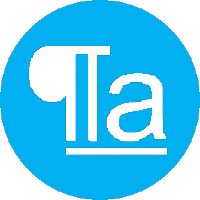 Kindergarten (ELA) Targeted Standard
Kindergarten (ELA) Targeted Standard
(L) Strand: Language
Cluster: Conventions of Standard English
ELA-00.L.01 Demonstrate command of the conventions of standard English grammar and usage when writing or speaking.
Sub-Standards:
Introduce:
a. Uppercase and lowercase letters.
b. Use question words (interrogatives).
c. Produce complete sentences in shared language activities.
d. Common and proper noun.
e. Use regular plural nouns orally by adding /s/ or /es/.
f. Use frequently occurring adjectives.
g. Use articles.
h. Use frequently occurring conjunctions (and, or, but).
i. Use prepositions.
Student Learning Targets:
Knowledge Targets
Reasoning Targets
- I can identify the differences between upper and lowercase letters.
Skills (Performance) Targets
- I can print the letters in my name.
- I can print upper and lowercase letters correctly.
- I can use common nouns and verbs correctly when writing and speaking.
- I can make the correct plural noun when writing or speaking.
- I can use question words correctly when writing or speaking.
- I can use common prepositions correctly when writing or speaking.
- I can share my ideas and respond to questions using complete sentences.
- I can use letters to write words.
Proficiency Scale
The Student can ...
1 Beginning
... with help, demonstrates a partial understanding of some of the simpler details and processes (Score 2.0 content) and some of the more complex ideas and processes (Score 3.0 content).
Start
2 Developing
... demonstrates no major errors or omissions regarding the simpler details and processes but exhibits major errors or omissions regarding the more complex ideas and processes (Score 3.0 content).
Simple
3 Proficient
“The Standard.”
... demonstrates no major errors or omissions regarding any of the information and processes that were end of instruction expectations.
Target
4 Advanced
... demonstrates in-depth inferences and applications regarding more complex material that go beyond end of instruction expectations.
Complex
Resources
Vocabulary
- Uppercase Letter
- Lowercase Letter
- Noun
|
-
Verb
- Plural
- Question Word
|
-
Preposition
- Complete Sentence
|
|
|
ELA-00.L.01a
|
ELA-00 Targeted Standards
(L) Strand: Language
Cluster: Conventions of Standard English.
ELA-00.L.01 Demonstrate command of the conventions of standard English grammar and usage when writing or speaking.
a. Print many upper- and lowercase letters.
|
Student Learning Targets:
Reasoning Targets
- I can identify the differences between upper and lowercase letters
Skills (Performance) Targets
- I can print the letters in my name
- I can print upper and lowercase letters correctly
- I can use common nouns and verbs correctly when writing and speaking
- I can make the correct plural noun when writing or speaking
- I can use question words correctly when writing or speaking
- I can use common prepositions correctly when writing or speaking
- I can share my ideas and respond to questions using complete sentences
Product Targets
- I can use letters to write words
Proficiency (Rubric) Scale
| Score |
|
Description |
Sample Activity
|
| 4.0 |
There is no advanced criteria for this standard. Writing upper and lowercase letters is a foundational skill and when a student meets proficiency, they will apply this skill to authentic writing. |
|
| |
3.5 |
In addition to Score 3.0 performance, the student demonstrates in-depth inferences and applications regarding the more complex content with partial success. |
| 3.0 |
“The Standard.” Student is able to write many upper and lowercase alphabet letters.
|
The student is able to form nearly all upper and lowercase alphabet letters. |
| |
2.5 |
No major errors or emissions regarding 2.0 content and partial knowledge of the 3.0 content.
|
| 2.0 |
Student is able to write some upper and lowercase alphabet letters. |
The student writes at least half of the upper and lowercase alphabet letters. |
| |
1.5 |
In addition to 1.0 content, student has partial knowledge of the 2.0 |
| 1.0 |
Student is able to write the letters in his/her name.
|
The student writes his or her name (upper or lowercase letters are acceptable). |
| |
0.5 |
Limited or no understanding of the skill is demonstrated. |
Resources
Websites
Vocabulary
- Uppercase Letter
- Lowercase Letter
- Noun
- Verb
- Plural
- Question Word
- Preposition
- Complete Sentence
|
|
ELA-00.L.02
 Kindergarten (ELA) Targeted Standard
Kindergarten (ELA) Targeted Standard
(L) Strand: Language
Cluster: Conventions of Standard English
ELA-00.L.02 Demonstrate command of the conventions of standard English capitalization, punctuation, and spelling when writing.
 Proficiency Scale Proficiency Scale
Sub-Standards:
Introduce:
a. Recognize and name end punctuation.
b. Use end punctuation for sentences.
c. Use conventional spelling for words with common spelling patterns and for frequently
occurring irregular words.
d. Spell untaught words phonetically, drawing on phonemic awareness and spelling
conventions
e. Use conventional spelling for high-frequency and other studied words.
f. Spell grade-appropriate words correctly, consulting references as needed and/or
using spelling patterns and generalizations (e.g., word families, position-based
spelling, syllable patterns, ending rules, meaningful word parts).
Display proficiency in:
g. Capitalize the first word in a sentence and the pronoun I.
h. Write a letter or letters for most consonant and short-vowel sounds (phonemes).
i. Spell simple words phonetically, drawing on knowledge of sound-letter relationships.
|
|
ELA-00.L.03
 Kindergarten (ELA) Targeted Standard Kindergarten (ELA) Targeted Standard
(L) Strand: Language
Cluster: Knowledge of Language
ELA-00.L.03 (Begins in grade 2)
|
|
ELA-00.L.04
 Kindergarten (ELA) Targeted Standard
Kindergarten (ELA) Targeted Standard
(L) Strand: Language
Cluster: Vocabulary Acquisition and Use
ELA-00.L.04 With guidance and support from adults, determine or clarify the meaning of unknown and multiple-meaning words and phrases based on kindergarten reading and content
Sub-Standards:
a. Identify new meanings for familiar words and apply them accurately (e.g., knowing duck is a bird and learning the verb to duck).
b. Use the most frequently occurring inflections and affixes (e.g., -ed, -s, re-, un-, pre-, -ful, -less) as a clue to the meaning of an unknown word.
Student Learning Targets:
Knowledge Targets
Reasoning Targets
Skills (Performance) Targets
Proficiency Scale
The Student Will ...
1 Beginning
... with help, demonstrates a partial understanding of some of the simpler details and processes (Score 2.0 content) and some of the more complex ideas and processes (Score 3.0 content).
Start
2 Developing
... demonstrates no major errors or omissions regarding the simpler details and processes but exhibits major errors or omissions regarding the more complex ideas and processes (Score 3.0 content).
Simple
3 Proficient
“The Standard.”
... demonstrates no major errors or omissions regarding any of the information and processes that were end of instruction expectations.
Target
4 Advanced
... demonstrates in-depth inferences and applications regarding more complex material that go beyond end of instruction expectations.
Complex
Resources
Websites
- Links to sites that open in a new window
|
|
ELA-00.L.05
 Kindergarten (ELA) Targeted Standard
Kindergarten (ELA) Targeted Standard
(L) Strand: Language
Cluster: Vocabulary Acquisition and Use
ELA-00.L.05 With guidance and support from adults, explore word relationships and nuances in word meanings.
Sub-Standards:
a. Sort common objects into categories (e.g., shapes, foods) to gain a sense of the concepts the categories represent.
b. Demonstrate understanding of frequently occurring verbs and adjectives by relating them to their opposites (antonyms).
c. Identify real-life connections between words and their use (e.g., note places at school that are colorful).
d. Distinguish shades of meaning among verbs describing the same general action (e.g., walk, march, strut, prance) by acting out the meanings.
Student Learning Targets:
Knowledge Targets
Reasoning Targets
Skills (Performance) Targets
Proficiency Scale
The Student Will ...
1 Beginning
... with help, demonstrates a partial understanding of some of the simpler details and processes (Score 2.0 content) and some of the more complex ideas and processes (Score 3.0 content).
Start
2 Developing
... demonstrates no major errors or omissions regarding the simpler details and processes but exhibits major errors or omissions regarding the more complex ideas and processes (Score 3.0 content).
Simple
3 Proficient
“The Standard.”
... demonstrates no major errors or omissions regarding any of the information and processes that were end of instruction expectations.
Target
4 Advanced
... demonstrates in-depth inferences and applications regarding more complex material that go beyond end of instruction expectations.
Complex
Resources
Websites
- Links to sites that open in a new window
|
|
ELA-00.L.06
 Kindergarten (ELA) Targeted Standard
Kindergarten (ELA) Targeted Standard
(L) Strand: Language
Cluster: Vocabulary Acquisition and Use
ELA-00.L.06 Use words and phrases acquired through conversations,
reading, being read to, and responding to texts.
Student Learning Targets:
Knowledge Targets
Reasoning Targets
Skills (Performance) Targets
Proficiency Scale
The Student Will ...
1 Beginning
... with help, demonstrates a partial understanding of some of the simpler details and processes (Score 2.0 content) and some of the more complex ideas and processes (Score 3.0 content).
Start
2 Developing
... demonstrates no major errors or omissions regarding the simpler details and processes but exhibits major errors or omissions regarding the more complex ideas and processes (Score 3.0 content).
Simple
3 Proficient
“The Standard.”
... demonstrates no major errors or omissions regarding any of the information and processes that were end of instruction expectations.
Target
4 Advanced
... demonstrates in-depth inferences and applications regarding more complex material that go beyond end of instruction expectations.
Complex
Resources
Websites
- Links to sites that open in a new window
|
|
ELA-00.RF
Narrative for Reading Foundations Strand:
The Foundational Skill standards are directed toward fostering students' understanding and working knowledge of:
Concepts of Print: Recognizing the features print (ex. how to hold a book, knowing where to start reading....)
Phonological Awareness: Understanding how spoken words work (rhyming, hearing the individual sounds in words such as the first sound in the word cat is /c/).
Phonics and Word Study: The relationship between letters and sounds in language. Students will learn to recognize high-frequency words (ex. I, and, go, is, the) automatically.
Fluency: The ability to read smoothly and expressively, and in kindergarten students will participate in shared reading experiences and hear teachers reading aloud. This helps kindergarteners understand that we read with purpose
and understanding.
How to help your child at home with the foundational skill strand:
- Re-read favorite books to build awareness of how print works
- Have your child play matching games with alphabet letters (matching upper to lowercase)
- Point out and read billboards, signs, package labels and any other print encountered, pointing out letters
- Play rhyming games together in the car (What rhymes with tree?)
- Play word games, taking turns saying syllables and the partner guesses the word (el-e-phant=elephant)
- Discuss which letters and letter combinations go with which sounds in what you and your child are reading
- Help your child to decode (take apart) common words so that he/she becomes familiar with how to sound words out
- Have your child find high-frequency words in magazines or newspapers (kindergarteners work on recognizing 75 words automatically by the end of the year)
- Read higher levels of text to your child so that he/she can hear you read with accuracy, appropriate speed, and expression
Resources
Calculation Method for Strands
Strands are larger groups of related standards. The Strand Grade is a calculation of all the related standards. Click on the standard name below each strand to access the learning targets and proficiency scales for
each strand's related standards. |
|
ELA-00.RF.01
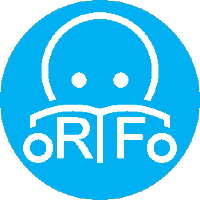 Kindergarden (ELA) Targeted Standard
Kindergarden (ELA) Targeted Standard
(RF) Strand: Reading Foundations/Skills
Cluster: Print Concepts
ELA-00.RF.01 Demonstrate understanding of the organization and basic features of print.
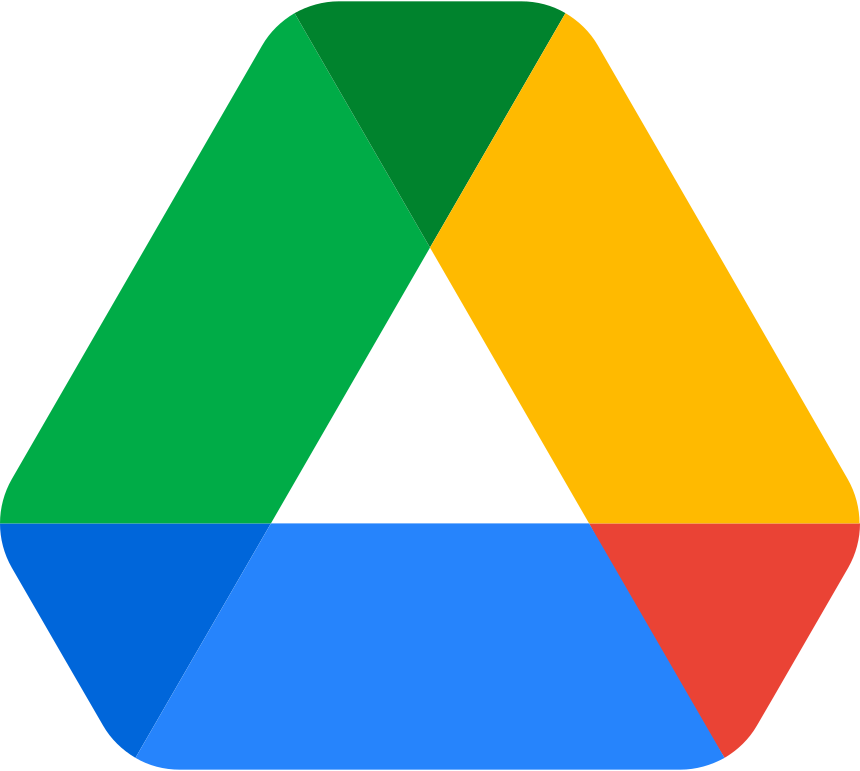 Teacher Proficiency Scale Teacher Proficiency Scale
Sub-Standards:
a. Follow words from left to right, top to bottom, and page by page.
b. Recognize spoken words are represented in written language by specific sequences of letters.
c. Understand words are separated by spaces in print.
d. Recognize and name all uppercase and lowercase letters of the alphabet.
Student Learning Targets:
Knowledge Targets
- I can hold a book correctly.
- I can recognize that books are read from left to right and top to bottom.
- I can recognize that letters make up words.
Reasoning Targets
- I can recognize that words are separated by spaces before and after them.
- I can recognize the difference between upper- and lowercase letters.
Skills (Performance) Targets
- I can name all uppercase and lowercase letters of the alphabet.
Proficiency Scale
The student can ...
1 Beginning
... with help, demonstrates a partial understanding of some of the simpler details and processes (Score 2.0 content) and some of the more complex ideas and processes (Score 3.0 content).
Novice
2 Developing
... demonstrates no major errors or omissions regarding the simpler details and processes but exhibits major errors or omissions regarding the more complex ideas and processes (Score 3.0 content).
- recognize or recall specific terminology, such as:
- letter, word, sentence, space, uppercase, lowercase, left, right, top, bottom, tracking,
- perform basic processes, such as:
- (a) shows where to start reading, where to go next
- (a) knows left page/right page (where to start)
- (b) identify the number of words in the sentence
- (c) know the difference between a letter, word and sentence
- (d) recognize all uppercase letters
- (d)recognize all lowercase letters
3 Proficient
“The Standard.”
... demonstrates no major errors or omissions regarding any of the information and processes that were end of instruction expectations.
- demonstrate understanding of the organization and basic features of print:
- follow words from left to right, top to bottom, and page by page
- recognize spoken words are represented in written language by specific sequences of letters
- understand words are separated by spaces in print
- recognize and name all uppercase and lowercase letters of the alphabet
4 Advanced
... demonstrates in-depth inferences and applications regarding more complex material that go beyond end of instruction expectations.
Complex
Resources
Vocabulary
- Alphabet
- Uppercase letter
- Lowercase letter
|
|
|
|
|
ELA-00.RF.01.a
|
ELA-00 Targeted Standards
(RF) Strand: Reading Foundations
Cluster: Print Concepts.
Sub-standard in bold is prioritized in this standard.
ELA-00.RF.01 Demonstrate understanding of the organization and basic features of print.
a. Follow words from left to right, top to bottom, and page by page
|
Student Learning Targets:
Knowledge Targets
- I can hold a book correctly
- I can recognize that books are read from left to right and top to bottom
Reasoning Targets
- I can recognize the difference between upper- and lowercase letters
Skills (Performance) Targets
- I can turn pages in a book from front to back and read the left page before the right
Rubric/Proficiency Scale
| Score |
|
Description |
Sample Activity
|
| 4.0 |
Following words on a page is a foundational skill where no advanced criteria is available. Once proficiency for this standard is met, students will be applying that knowledge in other standards in the Reading and Writing strands. |
|
| |
3.5 |
No Advanced Critera (see explanation for Level 4) |
| 3.0 |
“The Standard.” Student is able to follow words from:
- Left to right
- Top to bottom
- page by page
|
|
| |
2.5 |
No major errors or emissions regarding 2.0 content and partial knowledge of the 3.0 content. |
| 2.0 |
The student demonstrates tracking most of the time. |
|
| |
1.5 |
In addition to 1.0 content,student has partial knowledge of the 2.0 content. |
| 1.0 |
The student sometimes follows words, but is not consistent.
|
|
| |
0.5 |
Limited or no understanding of the skill is demonstrated |
Resources
Websites
Vocabulary
- Letters
- Words
- Tracking
- Follow
- Pages
- Turn
- Top
- Bottom
- Right-side up
- Left
- Right
|
|
ELA-00.RF.01.d
|
ELA-00 Targeted Standards
(RF) Strand: Reading Foundations
Cluster: Print Concepts.
Sub-standard in bold is prioritized in this standard.
ELA-00.RF.01 Demonstrate understanding of the organization and basic features of print.
d. Recognize and name all upper-lowercase letters of the alphabet
|
Student Learning Targets:
Knowledge Targets
- I can recognize that letters make up words
Reasoning Targets
- I can recognize the difference between upper- and lowercase letters
Skills (Performance) Targets
- I can name all uppercase and lowercase letters of the alphabet
Rubric/Proficiency Scale
| Score |
|
Description |
Sample Activity
|
| 4.0 |
Naming alphabet letters is a foundational skill where no advanced criteria is available. Once proficiency for this standard is met, students will be applying that knowledge in other standards in the Reading and Writing strands. |
|
| |
3.5 |
No Advanced Criteria (see explanation for Level 4) |
| 3.0 | The student is able to name 52 upper and lowercase letters of the alphabet.
|
|
| |
2.5 |
Student is able to name 46-51 upper and lowercase letters of the alphabet |
| 2.0 |
The student is able to name at least 40 upper and lowercase letters of the alphabet.
|
|
| |
1.5 |
Student is able to name 36-39 upper and lowercase letters of the alphabet |
| 1.0 | The student is able to name at least 25 upper and lowercase letters of the alphabet. |
|
| |
0.5 |
Student names 26 or less letter names |
Resources
Vocabulary
- Alphabet
- Letters
- Uppercase
- Lowercase
|
|
ELA-00.RF.01.p1
 Kindergarten (ELA) Targeted Sub-Standard
Kindergarten (ELA) Targeted Sub-Standard
(RF) Strand: Reading Foundations/Skills
Cluster: Print Concepts
ELA-00.RF.01 Demonstrate understanding of the organization and basic features of print.
ELA-00.RF.01.p1 Part 1
-
d. Recognize and name all uppercase and lowercase letters of the alphabet.
 Proficiency Scale Proficiency Scale
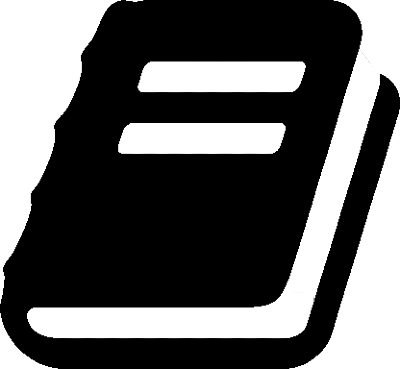 Curriculum Resources Curriculum Resources
|
|
ELA-00.RF.01.p2
 Kindergarden (ELA) Targeted Sub-Standard
Kindergarden (ELA) Targeted Sub-Standard
(RF) Strand: Reading Foundations/Skills
Cluster: Print Concepts
ELA-00.RF.01 Demonstrate understanding of the organization and basic features of print.
ELA-00.RF.01.p2 Part 2
-
a) Follow words from left to right, top to bottom, and page by page
-
b) Recognize spoken words are represented in written language by specific sequences of letters.
-
c) Understand words are separated by spaces in print.
 Proficiency Scale Proficiency Scale
|
|
ELA-00.RF.02
 Kindergarten (ELA) Targeted Standard
Kindergarten (ELA) Targeted Standard
(RF) Strand: Reading Foundations/Skills
Cluster: Phonological Awareness
ELA-00.RF.02 Demonstrate understanding of spoken words, syllables, and sounds (phonemes)
 Teacher Proficiency Scale Teacher Proficiency Scale
Sub-Standards:
a. Recognize and produce rhyming words.
b. Count, pronounce, blend, and segment syllables in spoken words.
c. Blend and segment onsets and rimes of single-syllable spoken words.
d. Isolate and pronounce the initial, medial vowel, and final sounds (phonemes) in three phoneme (consonant-vowel-consonant, or CVC) words. (This does not include CVCs ending with /l/, /r/, or /x/).
e. Add or substitute individual sounds (phonemes) in simple, single-syllable words to make new words.
Student Learning Targets:
Knowledge Targets
- I can recognize words that begin with the same sound (dog/dish).
- I can recognize words that end with the same sound (man/tin).
- I can recognize words that have the same middle sound (pen/bet).
Reasoning Targets
Skills (Performance) Targets
- I can take apart a word and tell you the beginning sound, middle sound and ending sound.
Proficiency Scale
The student can ...
1 Beginning
... with help, demonstrates a partial understanding of some of the simpler details and processes (Score 2.0 content) and some of the more complex ideas and processes (Score 3.0 content).
Novice
2 Developing
... demonstrates no major errors or omissions regarding the simpler details and processes but exhibits major errors or omissions regarding the more complex ideas and processes (Score 3.0 content).
- recognize or recall specific terminology, such as:
- rhyming word, syllable, blend, segment, vowel, consonant, substitute
- perform basic processes, such as:
- (a) recognize rhyming word pairs or sets
- (b) blend and pronounce syllables in a word
- (c) blend onset-rime in words
- (d) isolate the initial sound in CVC words
- (d) isolate the final sound in CVC words
- (e) discriminate between words with same or different initial sounds
3 Proficient
“The Standard.”
... demonstrates no major errors or omissions regarding any of the information and processes that were end of instruction expectations.
- demonstrate understanding of spoken words, syllables, and sounds (phonemes):
- (a) recognize and produce rhyming words
- (b) count, pronounce, blend, and segment syllables in spoken words
- (c) blend and segment onsets and rimes of single-syllable spoken words
- (d) isolate and pronounce the initial, medial vowel, and final sounds (phonemes) in three phoneme (consonant-vowel-consonant, or CVC) words (This does not include CVCs ending with /l/, /r/, or /x/)
- (e)add or substitute individual sounds (phonemes) in simple, single-syllable words to make new words
4 Advanced
... demonstrates in-depth inferences and applications regarding more complex material that go beyond end of instruction expectations.
Complex
Resources
Vocabulary
- Beginning sound
- Middle sound
- Ending sound
|
|
|
|
|
ELA-00.RF.02.a
|
ELA-00 Targeted Standards
(RF) Strand: Reading Foundations
Cluster: Phonological Awareness.
ELA-00.RF.02 Demonstrate understanding of spoken words, syllables, and sounds (phonemes).
a. Recognize and produce rhyming words
|
Student Learning Targets:
Knowledge Targets
- I can recognize words that have the same middle and ending sound with the same sound (rhyming words)
Skills (Performance) Targets
- I can give you two words that have the same middle and endign sound (rhyming words)
Rubric/Proficiency Scale
| Score |
|
Description |
Sample Activity
|
| 4.0 |
Rhyming is a foundational skill where no advanced criteria is available. Once proficiency for this standard is met, you will see your student applying it to other standards such as letter/sound correspondence, decoding and writing. |
|
| |
3.5 |
No advanced criteria (see Level 4 for explanation) |
| 3.0 | The student is able to produce rhyming words (when given the word clock the student can say a word that rhymes with clock such as sock, dock, knock).
|
|
| |
2.5 |
No major errors or emissions regarding 2.0 content and partial knowledge of the 3.0 content.
|
| 2.0 |
The student is able to identify a rhyming word out of a list for a given word. Out of the words fish, clock and boat- the student can determine that fish rhymes with the given word- dish.
|
|
| |
1.5 |
In addition to 1.0 content,student has partial knowledge of the 2.0 content. |
| 1.0 |
The student is able to identify two words that rhyme (given three sets of words such as dog/hog, cat/dish and clock/goat, the student can pick out dog/hog as the rhyming words).
|
|
| |
0.5 |
Limited or no understanding of the skill is demonstrated. |
Resources
Websites
Vocabulary
- Rhyme
- Sound
- Produce
- Identify
|
|
ELA-00.RF.02.d |
ELA-00 Targeted Standards
(RF) Strand: Reading Foundations
Cluster: Phonological Awareness.
Sub-standard in bold is prioritized within this standard
ELA-00.RF.02 Demonstrate understanding of spoken words, syllables, and sounds (phonemes).
d. Isolate and pronounce the initial, medial vowel and final sounds (phonemes) in three phoneme (CVC) words
|
Student Learning Targets:
Knowledge Targets
- I can recognize words that begin with the same sound (dog/dish)
- I can recognize words that end with the same sound (man/tin)
- I can recognize words that have the same middle sound (pen/bet)
Skills (Performance) Targets
- I can take apart a word and tell you the beginning sound, middle sound and ending sound
Rubric/Proficiency Scale
| Score |
|
Description |
Sample Activity
|
| 4.0 |
Isolating beginning/middle and ending sounds in words is a foundational skill where no advanced criteria is available. Once proficiency for this standard is met, you will see your student applying it to other standards such as letter/sound correspondence ,decoding and writing. |
|
| |
3.5 |
No advanced criteria (see Level 4 for explanation) |
| 3.0 |
The student is able to produce initial, middle and final sounds in words, such as the /c/ in cat, the /a/ in cat and the /t/ in cat. |
|
| |
2.5 |
No major errors or emissions regarding 2.0 content and partial knowledge of the 3.0 content.
|
| 2.0 |
The student is able to isolate and pronounce the middle or ending sounds in words.
|
|
| |
1.5 |
In addition to 1.0 content,student has partial knowledge of the 2.0 content. |
| 1.0 |
The student is able to isolate the initial sounds in words.
|
|
| |
0.5 |
Limited or no understanding of the skill is demonstrated. |
Resources
Vocabulary
- Phoneme
- Beginning sound
- Ending sound
- Middle sound
|
|
ELA-00.RF.02.p1
 Kindergarden (ELA) Targeted Sub-Standard
Kindergarden (ELA) Targeted Sub-Standard
(RF) Strand: Reading Foundations/Skills
Cluster: Phonological Awareness
ELA-00.RF.02 Demonstrate understanding of spoken words, syllables, and sounds (phonemes)
ELA-00.RF.02.p1 Part 1
-
a) Recognize and produce rhyming words
 Proficiency Scale Proficiency Scale
|
|
ELA-00.RF.02.p2
 Kindergarden (ELA) Targeted Sub-Standard
Kindergarden (ELA) Targeted Sub-Standard
(RF) Strand: Reading Foundations/Skills
Cluster: Phonological Awareness
ELA-00.RF.02 Demonstrate understanding of spoken words, syllables, and sounds (phonemes)
ELA-00.RF.02.p2 Part 2
-
b) Count, pronounce, blend and segment syllables in spoken words
 Proficiency Scale Proficiency Scale
|
|
ELA-00.RF.02.p3
 Kindergarden (ELA) Targeted Sub-Standard
Kindergarden (ELA) Targeted Sub-Standard
(RF) Strand: Reading Foundations/Skills
Cluster: Phonological Awareness
ELA-00.RF.02 Demonstrate understanding of spoken words, syllables, and sounds (phonemes)
ELA-00.RF.02.p3 Part 3
-
c) Blend and segment onsets and rimes of single-syllable spoken words.
-
d) Isolate and pronounce the initial, medial vowel, and final sounds (phonemes) in three phoneme (consonant-vowel-consonant, or CVC) words. (This does not include CVCs ending with /l/, /r/, or /x/).
-
e) Add or substitute individual sounds (phonemes) in simple, single-syllable words to make new words
 Proficiency Scale Proficiency Scale
|
|
ELA-00.RF.03
 Kindergarden (ELA) Targeted Standard
Kindergarden (ELA) Targeted Standard
(RF) Strand: Reading Foundations/Skills
Cluster: Phonics and Word Recognition
ELA-00.RF.03 Know and apply grade-level phonics and word analysis skills in decoding words.
 Teacher Proficiency Scale Teacher Proficiency Scale
Sub-Standards:
a. Demonstrate basic knowledge of one-to-one letter-sound correspondences by producing the primary or many of the most frequent sounds for each consonant.
b. Associate the long and short sounds with common spellings (graphemes) for the five vowel sounds.
c. Decode and use CVC words.
d. Read common high-frequency words by sight.
e. Distinguish between similarly spelled words by identifying the sounds of the letters that differ.
Student Learning Targets:
Knowledge Targets
- I can identify the five major vowels.
Reasoning Targets
Skills (Performance) Targets
- I can say the most common sound of each consonant.
- I can say the long and short vowel sounds for each vowel.
- I can blend the sounds of the letters to read a word.
- I can read common words without having to sound them out.
Proficiency Scale
The student can ...
1 Beginning
... with help, demonstrates a partial understanding of some of the simpler details and processes (Score 2.0 content) and some of the more complex ideas and processes (Score 3.0 content).
2 Developing
... demonstrates no major errors or omissions regarding the simpler details and processes but exhibits major errors or omissions regarding the more complex ideas and processes (Score 3.0 content).
- recognize or recall specific terminology, such as:
- letter names, letter sounds, word, sight words, decode, blend, sound out, consonant, vowel
- perform basic processes, such as:
- (a) demonstrate basic knowledge of one-to-one letter-sound correspondences by producing the primary or many of the most frequent sounds for each consonant
3 Proficient
“The Standard.”
... demonstrates no major errors or omissions regarding any of the information and processes that were end of instruction expectations.
- (b) associate the long and short sounds with common spellings (graphemes) for the five vowel sounds
- (c) decode and read CVC words
- (d) read common high-frequency words by sight
- (e) distinguish between similarly spelled words by identifying the sounds of the letters that differ
4 Advanced
... demonstrates in-depth inferences and applications regarding more complex material that go beyond end of instruction expectations.
- transfer phonics / decoding skills to authentic reading and writing
Resources
|
|
ELA-00.RF.03.a
|
ELA-00 Targeted Standards
(RF) Strand: Reading Foundations
Cluster: Phonics and Word Recognition.
Sub-standards in bold are prioritized for this standard.
ELA-00.RF.03 Know and apply grade-level phonics and word analysis skills in decoding words.
a. Demonstrate basic knowledge of letter-sound correspondences by producing the primary or most frequent sound for each consonant
|
Student Learning Targets:
Skills (Performance) Targets
- I can say the most common sound of each consonant
Proficiency (Rubric) Scale
| Score |
|
Description |
Sample Activity
|
| 4.0 |
Identifying sounds for letters is a foundational skill where no advanced criteria is available. When a student meets proficiency for these standards, you will see application of these skills in other standards such as: reading text and writing. |
|
| |
3.5 |
No advanced criteria is available (see Level 4 for explanation) |
| 3.0 |
The student is able to produce the common sounds for 26 consonants and short vowel sounds. |
|
| |
2.5 |
No major errors or emissions regarding 2.0 content and partial knowledge of the 3.0 content.
|
| 2.0 |
The student is able to produce the common sounds for at least 20 consonants and short vowel sounds.
|
|
| |
1.5 |
In addition to 1.0 content,student has partial knowledge of the 2.0 content. |
| 1.0 |
The student is able to produce the common sounds for at least 10 consonants and short vowel sounds.
|
|
| |
0.5 |
Limited or no understanding of the skill is demonstrated. |
Resources
|
|
ELA-00.RF.03.c
|
ELA-00 Targeted Standards
(RF) Strand: Reading Foundations
Cluster: Phonics and Word Recognition.
Sub-standards in bold are prioritized for this standard.
ELA-00.RF.03 Know and apply grade-level phonics and word analysis skills in decoding words.
c. Decode and read CVC words
|
Student Learning Targets:
Knowledge Targets
- I can identify the five major vowels
Skills (Performance) Targets
- I can say the long and short vowel sounds for each vowel
- I can blend the sounds of the letters to read a word
Proficiency (Rubric) Scale
| Score |
|
Description |
Sample Activity
|
| 4.0 |
The student decodes and reads words in text that is at the end of the early reading stage:
- Words with common vowel teams
- Two-syllable words
- Words with inflected endings (-ing)
- Sight words found in text at the end of the early stage of reading
|
|
| |
3.5 |
No advanced criteria is available (see Level 4 for explanation) |
| 3.0 |
The student decodes and reads CVC (consonant/vowel/consonant) words in text that is at the end of the emergent reading stage. The student is beginning to use known word patterns when decoding unknown words (can say c-at instead of having to say c-a-t when decoding a word).
|
|
| |
2.5 |
No major errors or emissions regarding 2.0 content and partial knowledge of the 3.0 content.
|
| 2.0 |
The student isolates individual sounds of words (c-a-t) but cannot blend the sounds back together to read the word. | |
| |
1.5 |
In addition to 1.0 content, student has partial knowledge of the 2.0 content. |
| 1.0 | The student can isolate some individual letter sounds in a CVC (consonant/vowel/consonant) word- the student can say the /c/ sound in the word cat. | |
| |
0.5 |
Limited or no understanding of the skill is demonstrated. |
Resources
Websites
Vocabulary
- Sound
- Short Vowel
- Long Vowel
- Consonant
- Decode
- Letter
- Read
|
|
ELA-00.RF.03.d
|
ELA-00 Targeted Standards
(RF) Strand: Reading Foundations
Cluster: Phonics and Word Recognition.
Sub-standards in bold are prioritized for this standard.
ELA-00.RF.03 Know and apply grade-level phonics and word analysis skills in decoding words.
d.. Read common high-frequency words by sight (the, of, to, you, she, is, are.....)
|
Student Learning Targets:
Skills (Performance) Targets
- I can read common words without having to sound them out
Proficiency (Rubric) Scale
| Score |
|
Description |
Sample Activity
|
| 4.0 |
Reading high-frequency words is a foundational skill where no advanced criteria is available. When a student meets proficiency for these standards, you will see application of these skills in other standards such as: reading text and writing. |
|
| |
3.5 |
No advanced criteria is available (see Level 4 for explanation) |
| 3.0 |
The student reads at least 35 words commonly found in texts at the end of the emergent reading stage. |
|
| |
2.5 |
No major errors or emissions regarding 2.0 content and partial knowledge of the 3.0 content.
|
| 2.0 |
The student reads at least 20 words commonly found in texts at the emergent reading stage.
| |
| |
1.5 |
In addition to 1.0 content,student has partial knowledge of the 2.0 content. |
| 1.0 |
The student reads at least 5 words commonly found in texts at the emergent reading stage.
|
|
| |
0.5 |
Limited or no understanding of the skill is demonstrated. |
Resources
Websites
Vocabulary
|
|
ELA-00.RF.03.p1
 Kindergarden (ELA) Targeted Sub-Standard
Kindergarden (ELA) Targeted Sub-Standard
(RF) Strand: Reading Foundations/Skills
Cluster: Phonics and Word Recognition
ELA-00.RF.03 Know and apply grade-level phonics and word analysis skills in decoding words.
ELA-00.RF.03.p1 Part 1
-
a) Demonstrate basic knowledge of one-to-one letter-sound correspondences by producing the primary or many of the most frequent sounds for each consonant.
-
b) Associate the long and short sounds with the common spellings (graphemes) for the five major vowels
 Proficiency Scale Proficiency Scale
|
|
 Standards Glossaries
Standards Glossaries Standards Glossaries
Standards Glossaries Standards Glossaries
Standards Glossaries Standards Glossaries
Standards Glossaries Standards Glossaries
Standards Glossaries
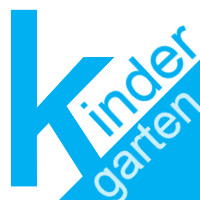

 Kindergarten
Kindergarten